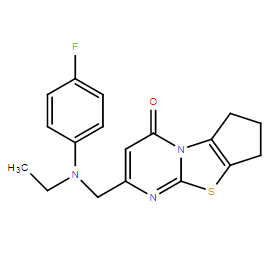| In Vitro |
Both GNE-6901 and GNE-8324 increase Glu potency, whereas neither PAM had significant effects on glycine (Gly) potency. Furthermore, both compounds slowed channel deactivation kinetics. However, GNE-8324 caused significantly slower NMDAR current deactivation following the termination of Glu application, compared to GNE-6901. Interestingly, when Gly was removed following the rapid Glu/Gly application in the constant presence of Glu, NMDAR currents rapidly deactivated in the presence of either GNE-6901 or GNE-8324, which is in sharp contrast to the slower NMDAR current deactivation in the presence of GNE-8324 when Gly was not removed. The authors argued that this demonstrated a specific interaction of PAMs with Glu but not Gly. However, these data also suggest that the slower NMDAR current deactivation in the presence of GNE-8324, but not GNE-6901, is highly dependent on ambient Gly concentration. GNE-8324 also markedly increased potency of Glu at GluN1/GluN2A NMDARs by about 10-fold while GNE-6901 had a much smaller effect on Glu potency. Finally GNE-8324 potency was strongly dependent on Glu concentration, whereas Glu concentration had only a modest effect on GNE-6901 potency. The deferential effects of GNE-6901 and GNE-8324 on GluN1/GluN2A NMDAR function could reflect subtle differences in modes of action of these closely related compounds, which might lead to distinct actions on NMDAR modulation in physiological settings.
|
